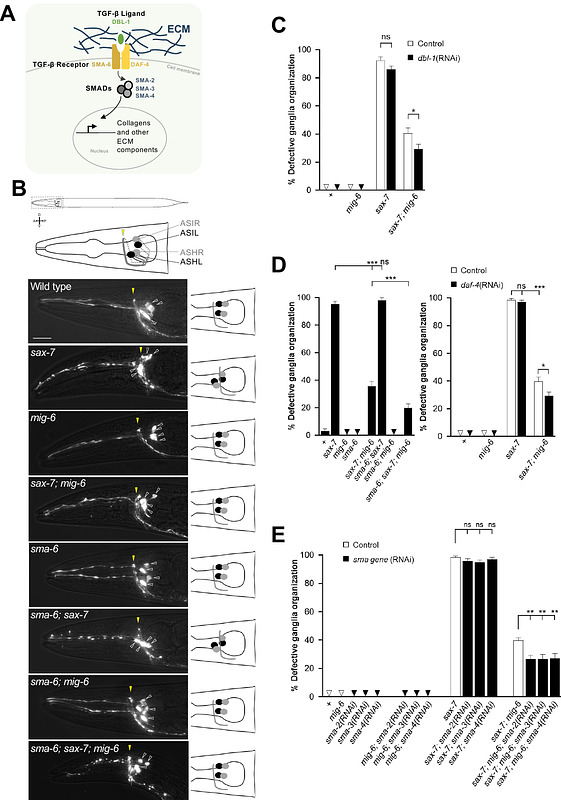Interplay between MIG-6/papilin and TGF-β signaling promotes extracellular matrix remodeling and modulates the maintenance of neuronal architecture

Interplay between MIG-6/papilin and TGF-β signaling promotes extracellular matrix remodeling and modulates the maintenance of neuronal architecture
Benard, C. Y.; Nadour, M.; VALETTE R. L., R. I.; FREBAULT, N.; Fontaine, V.; Rivollet, L.
AbstractNeuronal architecture laid out during embryogenesis persists lifelong, ensuring normal nervous system function. However, the mechanisms underlying the long-term maintenance of neuronal organization remain largely unknown. We previously uncovered that the conserved extracellular matrix protein MIG-6/papilin impacts collagen IV remodeling and neuronal maintenance, such that disruption of MIG-6/papilin leads to a collagen IV fibrotic state and altered tissue biomechanics, thereby stabilizing neuronal architecture. Here, we combine incisive molecular genetics and in vivo quantitative imaging to determine how this mig-6-dependent fibrotic phenotype is modulated, by investigating the implication of the TGF-{beta} pathway, which is well known to regulate fibrosis in mammals. Our findings highlight a mechanism whereby the interplay between MIG-6/papilin and the TGF-{beta} pathway regulates ECM composition and neuronal maintenance, with MIG-6/papilin acting as a positive regulator of TGF-b signaling. This work provides key insights into the molecular basis of sustaining neuronal architecture and offers a foundation for understanding age-related neurodegenerative and fibrotic conditions.